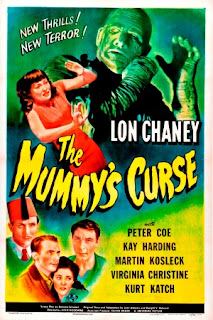The earlier posters (1930's/40's) have a playful over-designed quality that I love. Although the films themselves didn't always live up to the fantastic posters in terms of quality (Captive Wild Woman was pretty awful)
The posters from the 1980's were so much darker and more gruesome, aiming to satisfy our bizarre need to be horrified in the Cinema. (Not to say that a woman being eaten by a giant Tarantula isn't a terrifying thought) They employ heavy contrast and clever use of space and composition (House).
This gravitation towards gore and darkness developed after the glorious Golden Age of American Horror in the late '60's-early '70's, which was fuelled by social concerns of the day and the political situation in America.
It's fascinating to me, how film-makers responded to their surroundings in this period (The Vietnam War; The Civil Rights Movement; The assassination of J.F.K.) and manifested the true fears of their audience in the form of fictional monsters. For example, George A. Romero's 'Night of the Living Dead', the Zombie apocalypse representing the breakdown of society. And most horrifying of all, the film gives us a glimpse of the ugliness of human nature and OUR capacity for evil when the chips are down. (Reminiscent of brutal photographs taken from Vietnam. The Americans are not always the good guys. A horrifying thought for the American people)
What's perhaps even more fascinating is the question 'Why do people respond to this kind of horror?' Why do we need to be scared? It seems that we have a subconscious need to deal with serious fears and issues facing society, such as Global Warming, War in the Middle-East, etc. However it's easier to confront these issues from the safety of the movie theatre. Is it like a clearing of the conscience? A penance? Or do we just need to be reassured that monsters only exist in the movies?









.jpg)








No comments:
Post a Comment